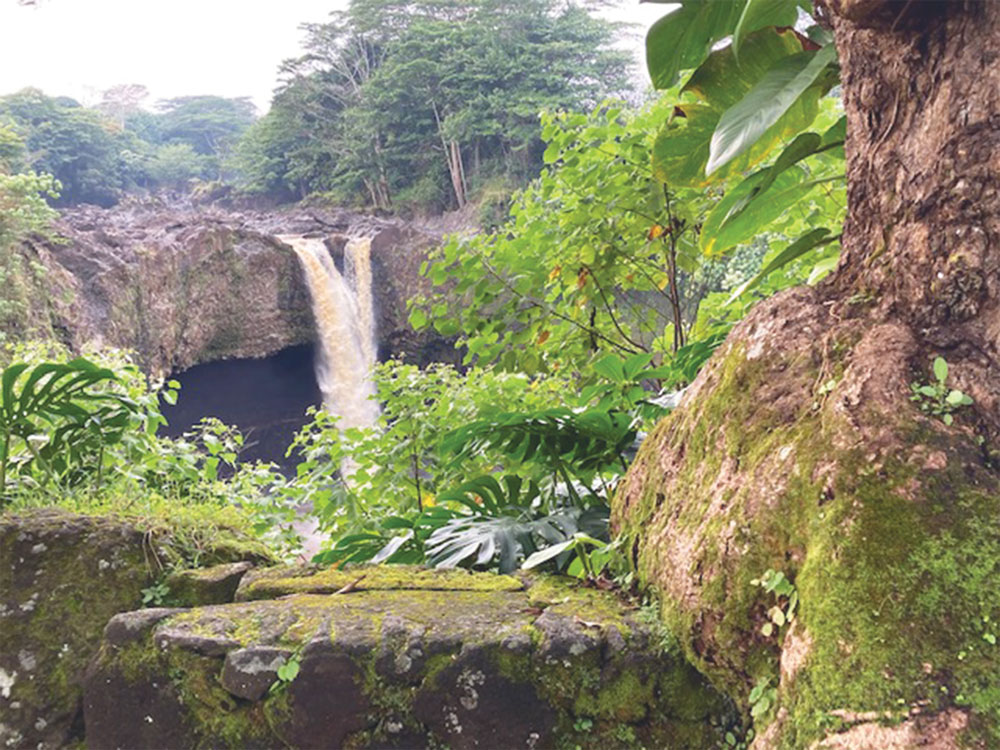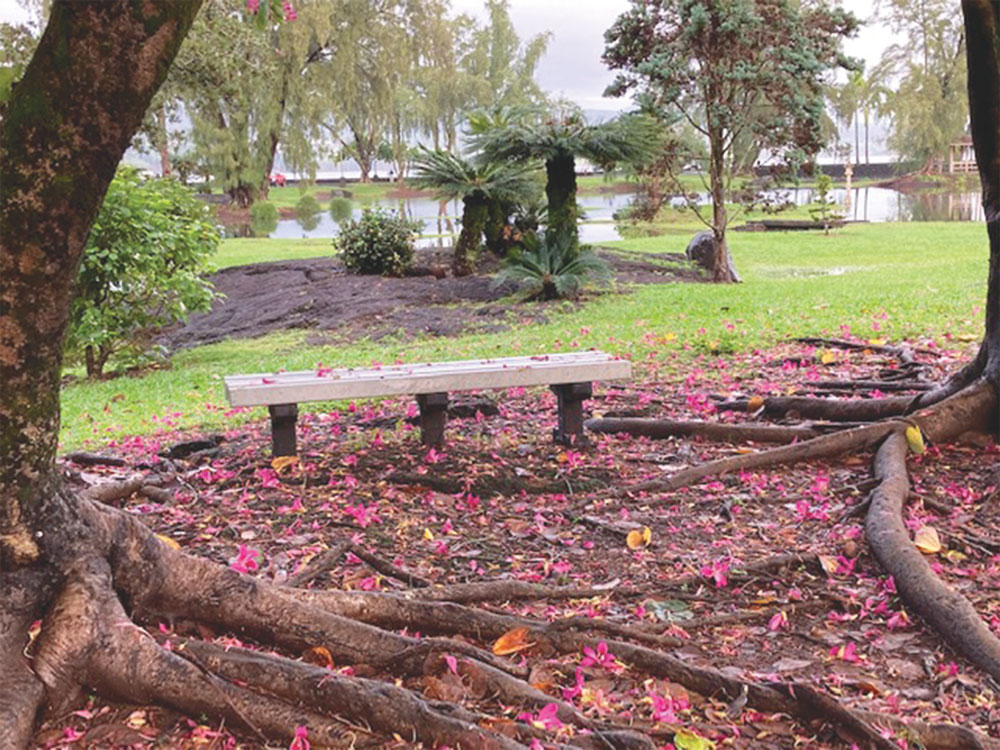Hawaii: The Big Island
Article and photos by Joe Gschwendtner

Rainbow Falls is another Hilo local attraction, an 80-foot white shower seen running strong here after monsoonal rains.
My first trip to Hawaii was for rest and relaxation from Vietnam in 1970, and I returned last month. Early on, there was some internal debate about the best island in the chain. Of course in paradise, there are no losers, but we continue to favor the Big Island.
She has multiple personalities – tourist-driven Kailua-Kona on the west coast, old Hawaii from the island’s northern tip south to Hilo, and up-country Waimea (also called Kamuela).
Standing alone in the center is the monster Hawaii Volcanoes National Park. The park encompasses two 13,000-foot behemoth volcanos – Mauna Kea and Mauna Loa, and includes many brilliant hiking opportunities.
Wearing tourist hats and T-shirts, spend time along the 4-mile stretch of the Kona Coast. Shops and restaurants at waterside are standard fare, but the ambiance, flowers and old banyan trees demand to be seen. It is also the site of the Royal Palace. Costco is north of town for provisions before moving on.
Northwest on the Kohala Coast are the mega resorts, pricey and spectacular with golf. We’ve always enjoyed the Fairmont Orchid, but there is a wide selection for deep budgets. Local swim beaches are quite nice; we favor Hapuna Beach.
Genuine old Hawaii is from 11 a.m. until 4 p.m. on the island – including Hilo. To fully enjoy it, requires a few trips to road endings. From Kohala, drive north and look for whales. See Hawi and beyond to the Pololu Valley overlook. The area is quaint, pockmarked by buildings of the times when sugar and its mills were king.

Lilo park pictures taken in Liliuokalani Park prefixed “lil.”
To return south, take scenic Highway 250 through prime ranch land down to Waimea, home of the Parker Ranch. Its high altitude and western attitude remind us of home. During WWII, the area was a staging ground for the U.S. Marine Corps Camp Tarawa. Remarkable stories abound of that wartime period.
From there, continue west on the Hilo Road. Detour north at Honokaa on the Hamakua Coast. Road’s end offers a hike into the Waipio Valley, getting you to a rugged black sand beach. No flip flops allowed on this trek! Return to Honokaa and kick around. Drive to Hilo taking in more sights from yesteryear. See Akaka Falls. Buy goat cheese. Halt briefly at Laupahoehoe, dropping to the shore to understand the devastating power of a tidal wave.
On reaching Hilo, absorb an architecturally stimulating, historic working-class town with an extensive assortment of opportunities. Especially restaurants specializing in loco moco, contemporary Hawaiian cuisine which may include Spam and Portuguese sausage. I crave the Spam fritters over eggs and rice. Hilo’s best restaurant is almost certainly Jackie Rey’s Ohana Grill at happy hour. Its imaginative Asian fusion cuisine is worth shouting about.
While Hilo is the island’s logistic center and only cruise ship port, it also has spectacular parks, waterfalls, ocean vistas and museum offerings. This includes a zoo, orchid garden and small farmers market. The Tsunami Museum curates the epic story of the 1946 and 1960 events. We stayed at the Grand Naniloa, a Hilton property on the bay and were quite pleased. Liliuokalani Park, Coconut Island and bayside Banyan Drive are alone worth a visit to Hilo.